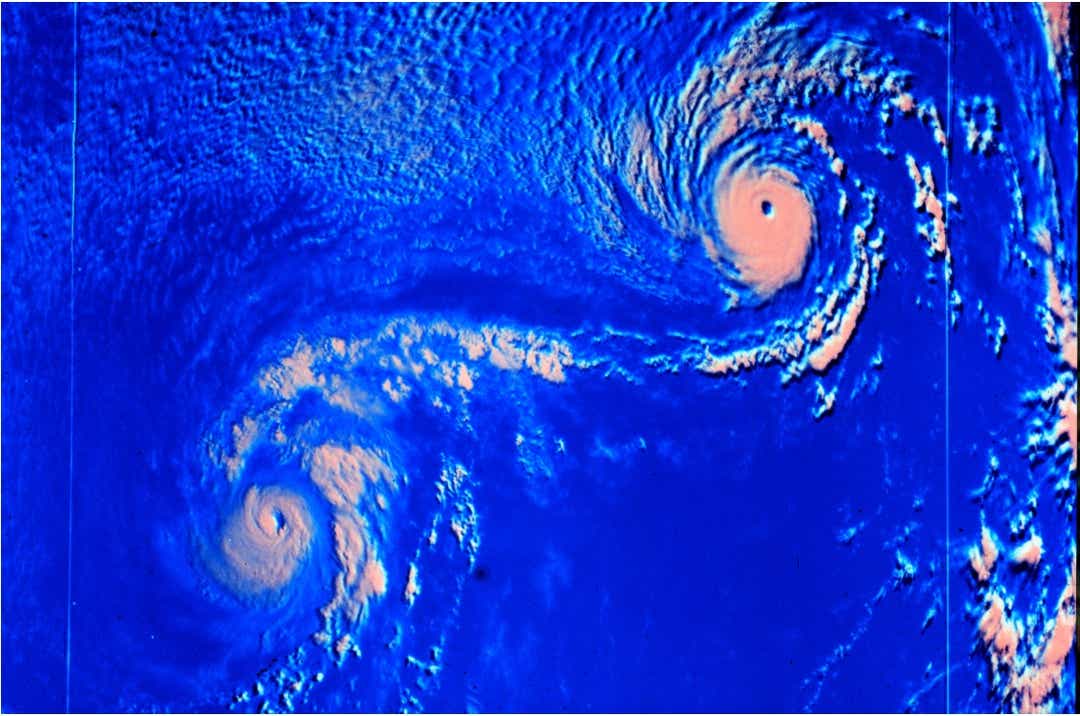With Tropical Storms Laura and Marco both forecast to be in the Gulf of Mexico together early next week, you might wonder if they could potentially collide or perhaps form one huge hurricane.
"Thankfully, any worries about the two storms merging into a 'super-hurricane' are unfounded," noted weather.us meteorologist Jack Sillin in his blog Friday. "When tropical cyclones arrive in close proximity to another tropical cyclone, the interaction is detrimental for both storms."
Latest updates: Tropical Storms Laura, Marco form potential double threat to Gulf Coast
Sillin said that if one storm is much stronger than the other, the weaker system will usually weaken substantially or dissipate as a result of the interaction.
If Laura and Marco are close enough together – which may or may not occur – what could happen is something called the Fujiwhara effect, which describes the rotation of two storms around each other. It's most common with tropical cyclones such as typhoons or hurricanes, but it also occurs in other cases.

When two hurricanes spinning in the same direction pass close enough to each other, they begin an intense dance around their common center, the National Weather Service said.
The effect is thought to occur when storms get about 900 miles apart.
Storms involved in the Fujiwhara effect are rotating around one another as if they had locked arms and were square dancing. Rather than each storm spinning about the other, they are actually moving about a central point between them, as if both were tied to the same post and each swung around it separately of the other.
A good way to picture this is to think of two ice skaters who skate quickly toward each other, nearly on a collision course, grab hands as they are about to pass and spin vigorously around in one big circle with their joined hands at the center.
The effect is named after Dr. Sakuhei Fujiwhara who was the chief of the Central Meteorological Bureau in Tokyo shortly after the first World War. In 1921, he wrote a paper describing the motions of "vortices" in water. Water vortices, such as whirlpools, are little water whirls that spin around.
Yet, the Gulf of Mexico has its limitations when two storms vie for dominance.
Some experts said Friday that the watery crater created by plate tectonics (the Gulf) is too small for the legendary Fujiwhara effect.
Instead, one storm typically dominates another in such a confined space, either pushing it away or tearing it apart with tendrils of cirrus clouds marking its own cyclone-toppling wind shear.
AccuWeather senior meteorologist Dan Kottlowski said he believes Marco will be the bigger storm, its counterclockwise swirl shoving Laura into the coast faster than what might be forecast.
But there's still a chance the storms may not make it to the Gulf as hurricanes.
“It’s still on the table that both of these may fizzle out,” senior meteorologist Jonathan Erdman of Weather.com, said. “This could all be for naught, which might be the most 2020 thing of them all.”
Contributing: Kimberly Miller, The Palm Beach Post
"may" - Google News
August 22, 2020 at 06:37PM
https://ift.tt/31kAFrn
Could hurricanes collide? Here's what may happen if Laura and Marco meet up in the Gulf - USA TODAY
"may" - Google News
https://ift.tt/3foH8qu
https://ift.tt/2zNW3tO
Bagikan Berita Ini














0 Response to "Could hurricanes collide? Here's what may happen if Laura and Marco meet up in the Gulf - USA TODAY"
Post a Comment